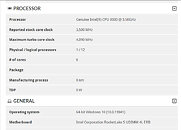Microsoft has released its Chromium-based Edge browser some time ago and it is already capturing the market. Just in April of this year, it became the world's second most popular web-browser, just behind Google Chrome. Surpassing even Mozilla's Firefox web-browser, the new Edge is rising in popularity very quickly. So far, Microsoft gave an option for Windows 10 users to just download the new browser if they want to, or the only Edge browser you had would be the old version based on the EdgeHTML engine. Even though Microsoft has
recently decided to start rolling out the new Chromium-based browser via OS updates, the old version could still find its way in the OS and there wouldn't be a new one present. Starting with update 20H2, Microsoft is bundling the new browser with OS update, making it a default option in the OS.
While the new browser is going to replace old Edge for default opening of links or some files like PDF, the old Edge will still be present. A lot of legacy applications are relying on opening some of their stuff in the old browser, and there sure would be problems if it would be gone. Additionally, gone are the year plus month names for Windows 10 updates, like 1803, 1903, and 1909. Now you get a year plus the first or second half of the year. For example, the next update is 20H2 (second half of 2020), and the one after it is 21H1 (first half of 2021). This is done to avoid confusion and with this Microsoft announced that updates will be faster in general.




























